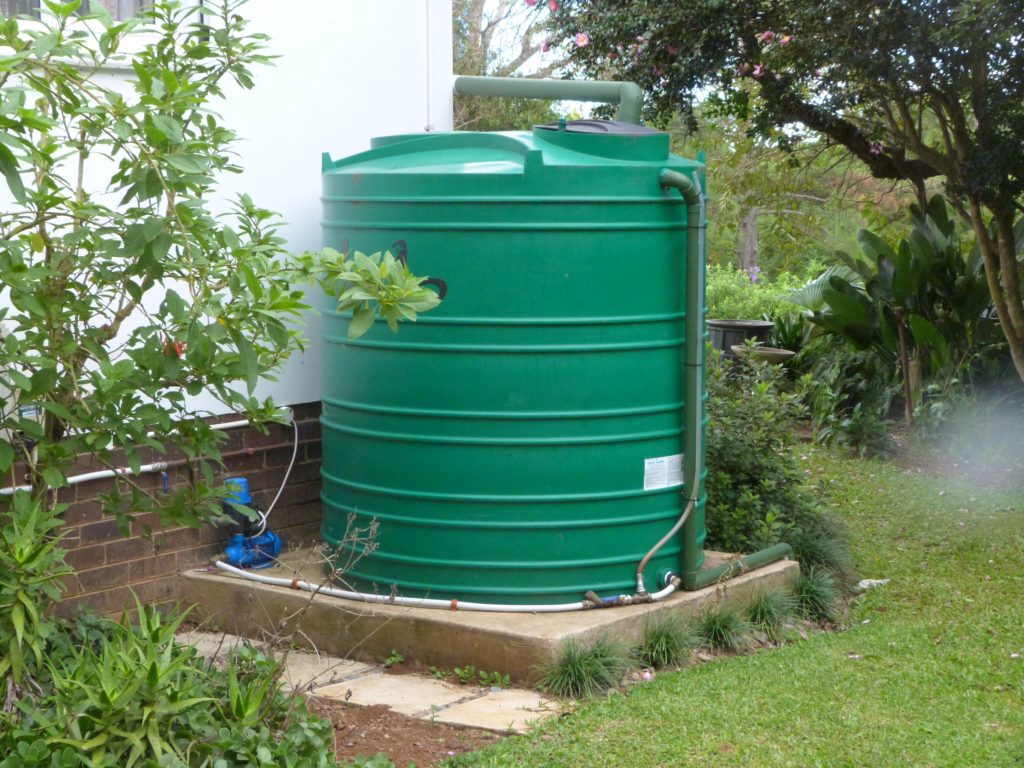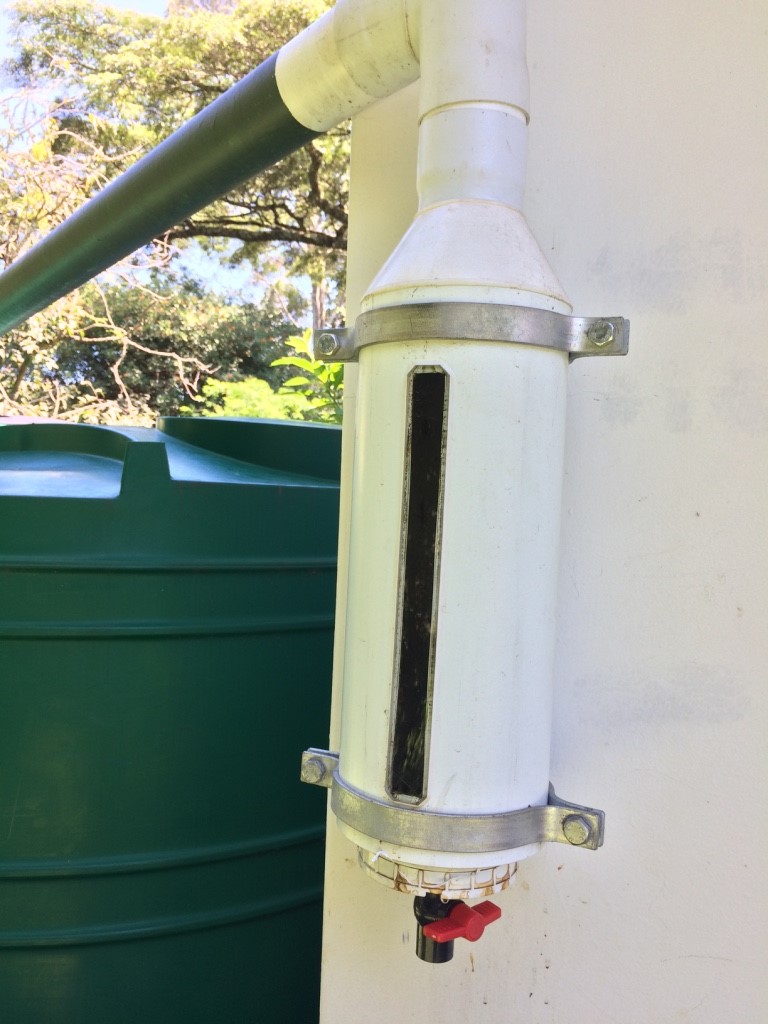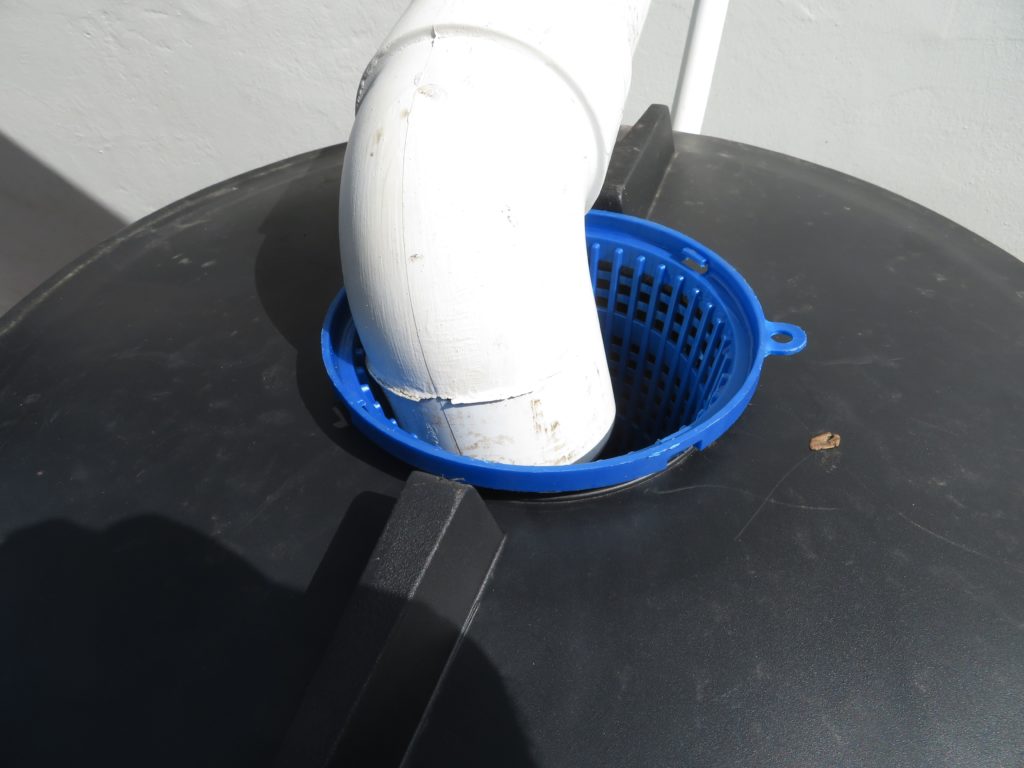Water Tanks
Yo
u have installed your rainwater tanks and you may have even connected them up with pumps to your toilets and are using rainwater for flushing purposes. So now you sit back, relax, and watch your water bill go down and do nothing further. Right? Wrong!

Rainwater
Think about where your rainwater comes from. Rain is formed in the atmosphere where moisture forms around minute particles of dust (nuclei) in the atmosphere, which then forms raindrops or other forms of precipitation. When the rain falls onto your roof, it moistens and wets the roof, drops off its dust nuclei, picks up dust from the atmosphere that has blown or settled on the roof, along with leaves, twigs and other detritus from the air. As the rain continues the volumes of water increases and this flows down your gutters and into your rainwater tanks. Thus, your rainwater is quite “dirty” and needs a certain degree of treatment, depending upon its final use.
Roof and Users
Remember your roof is also a “way station” for birds, monkeys (if you have them in your area) and other small mammals and creatures such as bats, mice, rats, and lizards. These all excrete solid and semi-solid waste which collect on the roof. On its way to your tanks the rainwater picks up all these materials and carries them into your water tanks, to a greater or lesser degree. (more about that below.)
Gutters
An important preventative measure is to carry out regular maintenance on your gutters. That means cleaning them of muck, debris, leaves and twigs. This will reduce the volumes of detritus travelling to your first flush units and filters and lower the workload of cleaning them out.
Rainwater for drinking?
For those of you that use rainwater for drinking purposes, it is critical that you ensure that you filter, decontaminate, and disinfect the rainwater to a drinking water standard. You should get advice from experts on minimum standards and equipment required to prevent health and disease problems. (This will be dealt with separately.)
First Flush Units

The first line of defence is to ensure that your drainpipes leading into the tanks are fitted with first flush units. The principle behind these is that the first flush of rainfall on the roof will carry with it, an initial load of dust, excreta, leaves and the like, diverting 10-30 litre (depending upon how low the unit is from the drain pipe). Once the first flush unit has filled up, the subsequent, cleaner rainwater will carry on to the feed pipe and into the rainwater tank.
Filters
As a further protection, consider adding swimming pool filter baskets to the inflow into the tank to collect larger debris such as leaves, which flow past the first flush. Some rainwater tanks are now fitted with mesh filters over the tank filling hole to catch smaller particles from entering the tank.

Cleaning Filters and First Flush Units
First flush units should be emptied after every rain storm. They should also be thoroughly cleaned periodically as materials can build up inside the filters and pose a health hazard. During the rainy season when storms might occur more frequently, say more than once or twice per week, you will notice that there is less material collected in the filter because the roof and gutters become “cleaner”. That, of course, doesn’t mean that they are uncontaminated. There will still be impurities and pollutants in the water.
Health and Safety
Take care when working with, and cleaning gutters, the filters and first flush units. Protect yourself using rubber gloves (and, where necessary) dust masks. Animal excreta contains germs and contaminants which can be a danger to health. Remember that the nuclei (core) of raindrops are minute particles which can get into your lungs and cause damage.
Afterthought
Experience has shown that once you have established your rainwater collection and storage system, it makes sense to establish some form of system to keep it maintained and clean. This can be as simple as a checklist system, either linked to a calendar or electronic reminder system or a formalised “procedure” listing all the tasks that need to be carried out and a schedule dictating when they must be done. If you look after your systems and maintain them regularly, they will give you decades of good service and save you a fortune.

The accompanying photo shows what comes out of a tank that has little or no filtration or separation of gutter and roof waste. The process of emptying and cleaning out rainwater tanks can be a dirty and potentially hazardous job which will be the subject of a separate article.
Arend Hoogervorst


